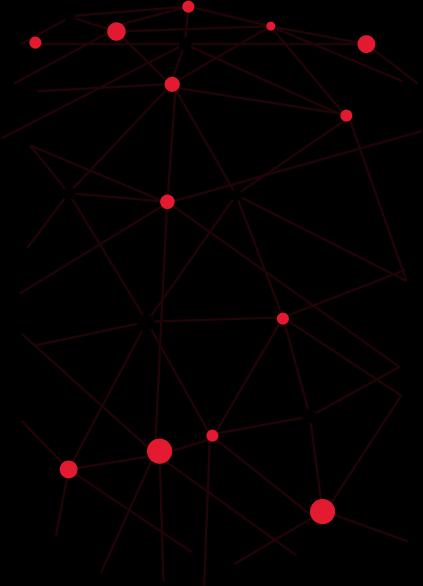
What is Deep Learning? Understanding Deep Learning in Artificial Intelligence
In recent years, Deep Learning has become one of the core technologies in Artificial Intelligence (AI). This technology plays a crucial role in various fields, such as image recognition, natural language processing (NLP), self-driving cars, healthcare, and many other industries.
So, what is Deep Learning? How does it work? Why is it considered a significant breakthrough in artificial intelligence? Let's explore the details with Tokyo Tech Lab in this article.
I. What is Deep Learning?
Deep Learning is a branch of Machine Learning within the field of Artificial Intelligence (AI) that utilizes Artificial Neural Networks (ANNs) with multiple layers to simulate how the human brain processes data.
Unlike traditional Machine Learning algorithms, Deep Learning can learn and analyze data at multiple levels of abstraction without requiring manual feature engineering. Thanks to advancements in hardware and Big Data, Deep Learning has become increasingly important in applications such as image recognition, natural language processing, self-driving cars, and AI chatbots.

II. How Does Deep Learning Work?
Deep Learning works by simulating how the human brain processes information, where data is passed through a deep neural network (DNN). This network consists of multiple artificial neuron layers that are interconnected, allowing the computer to learn from data without manually programmed rules.
To better understand, let's dive into the core components of Deep Learning.
1. Processing Input Data
A Deep Learning model starts by receiving raw data, which could be images, text, audio, or numerical data. Since input data is often high-dimensional and large, it needs to be converted into numerical vectors for the neural network to process.
Examples:
- Images are represented as pixel matrices (each pixel is a number).
- Text is converted into numerical sequences or word embeddings (e.g., Word2Vec, BERT).
- Audio is digitized into waveforms or Mel Spectrograms.
2. Passing Data Through the Artificial Neural Network
Deep Learning utilizes multi-layer artificial neural networks, which include:
- Input Layer – Receives raw data.
- Hidden Layers – Process data through millions of matrix operations and nonlinear transformations.
- Output Layer – Produces the final prediction.

Basic Structure of an Artificial Neuron:
- Each neuron in the network functions like a computational unit:
- Receives Input: Each neuron takes input from the previous layer.
- Applies Weights: Each input is multiplied by a weight (a numerical value).
- Summation: The weighted inputs are summed, and a bias is added.
- Activation Function: Determines whether the neuron should activate and pass the signal forward.
- Forward Propagation: If the signal surpasses a certain threshold, it is transmitted to the next layer.
3. Optimizing the Model Through Learning Algorithms
Deep Learning models do more than just pass data through networks—they also learn and optimize using two key mechanisms:
3.1. Forward Propagation
Data flows from input → hidden layers → output, where each layer performs calculations to extract features.
3.2. Loss Function
After making a prediction, the model calculates how far off the prediction is from reality using a loss function. Common loss functions include:
- Cross-Entropy Loss – Used for classification (e.g., image recognition).
- Mean Squared Error (MSE) – Used for regression (e.g., house price prediction).
3.3. Backpropagation & Weight Updates
Once the error is computed, the model adjusts its weights to minimize the error using optimization algorithms like Gradient Descent:
- Calculate the gradient of the loss function concerning each weight.
- Update weights in the direction that minimizes the error (learning process).
- Repeat this process thousands to millions of times until the model converges (i.e., the error is minimized).
4. Generating Output and Evaluating the Model
- Once training is complete, the Deep Learning model makes predictions based on new input data.
To evaluate the model’s accuracy, we use metrics such as:
- Accuracy – What percentage of predictions are correct?
- F1-Score, Precision, Recall – Metrics for classification tasks.
- MSE, RMSE – Error measurements for regression models.

If the model underperforms, we can:
- Modify the network architecture (e.g., number of layers, number of neurons).
- Adjust hyperparameters (e.g., learning rate, batch size).
- Train with more data to improve generalization
In summary, Deep Learning operates through multi-layer artificial neural networks, using forward propagation and backpropagation to learn from data and optimize results. Thanks to high computational power and large datasets, Deep Learning outperforms traditional Machine Learning methods, particularly in image processing, natural language understanding, and self-driving technology. This is why Deep Learning is at the core of today’s AI revolution.
III. Common Algorithms in Deep Learning
Deep Learning utilizes various types of algorithms depending on specific tasks such as image classification, natural language processing, time series prediction, anomaly detection, etc. Below are the most common Deep Learning algorithms, each with its own structure and working mechanism.
1. Artificial Neural Networks (ANN)
Applications: Financial forecasting, image recognition, text classification, healthcare, industrial automation.
Artificial Neural Networks (ANN) are the core foundation of Deep Learning, mimicking the way biological neurons in the human brain process and learn from data. ANN consists of multiple interconnected layers of neurons, allowing it to learn complex patterns and relationships in data.

A typical ANN consists of three main layers:
- Input Layer: Receives input data (images, text, numerical values).
- Hidden Layers: Perform computations and learning through weights and activation functions.
- Output Layer: Provides predictions or classifications.
Examples of ANN applications:
- Medical diagnosis: ANN helps analyze X-ray and MRI images to detect diseases.
- Stock price prediction: ANN can analyze financial trends and forecast stock prices.
- Face recognition: Security systems like Apple's Face ID use ANN for user identification.
- AI Chatbots: ANN enables chatbots to understand and respond to user messages more intelligently.
2. Convolutional Neural Networks (CNN)
Applications: Image recognition, object classification, video processing, medical imaging (diagnosing diseases from images).
CNN is a specialized Deep Learning algorithm for image processing. It employs convolutional layers to automatically extract features from images, allowing the model to understand content without manual feature design.

Basic structure of CNN:
- Convolutional Layer: Detects edges, shapes, and textures from images.
- Activation Layer (ReLU): Removes negative values while retaining key features.
- Pooling Layer: Reduces image size to optimize processing speed.
- Fully Connected Layer (FC): Aggregates extracted features for image classification.
Examples of CNN applications:
- Facebook & Google Photos: Face recognition and photo tagging suggestions.
- Tesla Autopilot: Analyzes data from self-driving car cameras.
- Google Lens: Image-based search and text translation from images.
3. Recurrent Neural Networks (RNN)
Applications: Natural Language Processing (NLP), machine translation, speech recognition, time series analysis.
RNN is a Deep Learning algorithm designed for sequential data processing, meaning it can remember information from previous steps to predict the next data point.

Structure of RNN:
- Each neuron receives input not only from the previous layer but also from itself in the previous step.
- RNN has a hidden state that stores past information to process new data.
Limitations of RNN:
- Vanishing & Exploding Gradient Problem: When handling long sequences, earlier information may fade, making it difficult for RNN to learn long-term dependencies.
- Solution: Improved versions like LSTM (Long Short-Term Memory) and GRU (Gated Recurrent Unit) address these limitations.
Examples of RNN applications:
- Google Translate: Machine translation for multiple languages.
- Siri & Google Assistant: Voice recognition and response generation.
- AI Chatbots (ChatGPT, Bing AI, Claude AI): Handles conversations by remembering previous context.
4. LSTM (Long Short-Term Memory) & GRU (Gated Recurrent Unit)
Applications: Time series processing, chatbots, sentiment analysis, financial forecasting.
LSTM and GRU are variants of RNN that solve the vanishing gradient problem and improve the ability to retain long-term information.

How LSTM improves RNN:
- LSTM uses gates to manage information flow, including:
- Forget Gate: Determines which information should be discarded.
- Input Gate: Decides which new information should be stored.
- Output Gate: Selects information to be passed to the next step.
- GRU is a simplified version of LSTM but remains powerful, using two main gates:
- Update Gate: Controls how much past information is retained.
- Reset Gate: Adjusts how much past information is forgotten.
Examples of LSTM & GRU applications:
- Netflix & YouTube: Predicts recommended content based on watch history.
- Google Stock Prediction: Real-time stock price forecasting.
- AI Chatbots: Remembers previous conversations for smarter responses.
5. Generative Adversarial Networks (GANs)
Applications: Image generation, photo editing, filmmaking, deepfake creation, content generation.
GAN is a unique Deep Learning algorithm that consists of two competing neural networks:
- Generator: Creates fake data.
- Discriminator: Detects whether the data is real or fake.

This process continues until the generator produces data indistinguishable from real data.
Examples of GAN applications:
- Deepfake: Generates highly realistic fake videos.
- DALL-E & Midjourney: Creates images from text descriptions.
- Photoshop AI: Uses AI for advanced photo editing.
6. Transformer
Applications: ChatGPT, Google Translate, big data analysis, text summarization.
Transformer is a groundbreaking Deep Learning algorithm that processes sequential data more efficiently than RNN and LSTM, thanks to the Self-Attention Mechanism.
Key components of Transformer:
- Self-Attention: Enables the model to focus on important parts of the data.
- Encoder & Decoder: Converts input data into output more effectively.
- Parallelization: Processes data faster than RNN and LSTM.
Examples of Transformer applications:
- ChatGPT (GPT-4), Google Bard, Claude AI: Intelligent conversational AI.
- Google Search RankBrain: Enhances search result relevance.
- Google Translate: Improves machine translation accuracy.
Each Deep Learning algorithm has its strengths, suited for different tasks. In the future, the combination of CNN, RNN, Transformer, GAN, and Autoencoder will drive major breakthroughs in AI, enabling more complex data processing with greater speed and accuracy.
IV. Practical Applications of Deep Learning
Deep Learning has been revolutionizing various fields thanks to its ability to process and learn from data with high accuracy. Below are some of the most notable real-world applications of Deep Learning, helping us better understand the importance of this technology.
3.1 Artificial Intelligence and Virtual Assistants
One of the most common applications of Deep Learning is virtual assistants such as Google Assistant, Siri, Alexa, and Cortana. These systems use Natural Language Processing (NLP) and deep neural networks to understand user queries, recognize speech, and respond in the most natural way.
3.2 Facial Recognition and Security
Deep Learning is widely used in facial recognition systems, enhancing security and user experience.
- Unlocking phones with Face ID: Apple uses Deep Learning to analyze facial features and authenticate identity.
- Security surveillance: AI-powered cameras can recognize individuals on watchlists and alert security personnel.
- Banking transaction authentication: Some banks have adopted facial recognition for login authentication and financial transactions.

3.3 Self-Driving Cars and Smart Transportation
Deep Learning is a core technology helping companies like Tesla, Waymo (Google), and BMW develop self-driving cars.
- Autonomous vehicles use artificial neural networks to analyze camera images, recognize pedestrians, traffic signs, and other vehicles.
- Deep Learning algorithms help cars predict traffic participants’ behavior, enabling decisions such as accelerating, braking, or changing lanes.
- Additionally, Deep Learning is used in smart traffic systems, optimizing traffic lights and reducing urban congestion.
3.4 Healthcare and Medical Applications
Deep Learning has brought significant breakthroughs in healthcare, assisting doctors in accurate diagnoses and improving treatment quality.
- Early cancer detection: AI can analyze X-ray and MRI images to detect cancer signs with higher accuracy than humans. For example, Google’s AI has helped detect breast cancer five years earlier than traditional methods.
- Diagnosing diseases through skin images: Applications like Dermatologist AI can identify skin cancer from a single image.
- AI assistants for doctors: AI can read medical records, suggest treatment plans, and help doctors make quicker decisions.
Thanks to Deep Learning, healthcare is moving towards a personalized medicine era, offering treatments tailored to individual patients.

3.5 Finance and Banking
Deep Learning helps banks and financial institutions analyze data faster, detect fraud, and personalize customer experiences.
- Fraud detection: AI can identify suspicious activities, such as unusual transactions from a different location or sudden spending spikes.
- Personal financial assistants: AI chatbots can offer financial advice, helping customers manage expenses and investments more effectively.
- Automated loan processing: Deep Learning enables banks to assess customers’ creditworthiness based on financial history, making loan approvals faster.
With the ability to analyze millions of transactions in real time, AI is making the financial sector safer, smarter, and more personalized.
3.6 Entertainment and Content Creation
The entertainment industry is also benefiting from Deep Learning, from personalized content recommendations to AI-generated music and films.
- Content recommendations on Netflix, YouTube, and Spotify: AI analyzes user preferences and suggests suitable movies and songs.
- AI-generated images, videos, and music: Tools like DALL-E, DeepDream, and Jukebox AI can create artwork and automatically compose music.
- Deepfake and CGI technology: AI can recreate actors’ faces, assisting in filmmaking or restoring historical images.
3.7 Education and Online Learning
Deep Learning is transforming education through intelligent learning platforms.
- AI-powered virtual tutors: Systems like Khan Academy AI and Duolingo AI provide personalized lessons based on students’ abilities.
- Automated content generation: AI can create lectures and multiple-choice questions based on source materials.
- Handwriting recognition and automatic translation: AI helps grade assignments and supports students with disabilities in accessing education.

Thanks to Deep Learning, learning is becoming more flexible, personalized, and efficient.
Deep Learning is revolutionizing many aspects of life, from artificial intelligence and healthcare to finance, education, and entertainment. This technology not only automates tasks but also enhances accuracy, convenience, and intelligence in daily activities. In the future, Deep Learning will continue to evolve and create new applications, making human life even better.
V. Benefits and Limitations of Deep Learning
Deep Learning is one of the most advanced technologies in artificial intelligence (AI), enabling computers to learn, analyze, and process data in a way that mimics human cognition. However, like any other technology, Deep Learning comes with both advantages and limitations.
1. Benefits of Deep Learning
Flexible Neural Network Architecture Adaptable to Various Algorithms: Deep Learning utilizes Artificial Neural Networks (ANNs) with multiple hidden layers, which can be flexibly adjusted to suit different tasks. For example, in image processing, Convolutional Neural Networks (CNNs) excel at feature detection, whereas Recurrent Neural Networks (RNNs) are better suited for sequential data like natural language processing. This adaptability allows Deep Learning to be widely applied across various industries.
Solves Complex Problems with High Accuracy: Deep Learning has demonstrated superior performance in tackling complex problems that traditional algorithms struggle with. For instance, in healthcare, Deep Learning models can detect early-stage cancer from X-ray images with accuracy comparable to or even surpassing that of specialized doctors. In finance, Deep Learning algorithms can analyze millions of transactions to detect fraud more accurately than traditional methods.
High Automation, Self-Adjustment, and Self-Optimization: One of the biggest advantages of Deep Learning is its ability to learn without requiring manually programmed rules. Instead of relying on experts to design specific algorithms, Deep Learning can automatically extract features from data, adjust weights, and optimize models to generate the most accurate predictions. This reduces the workload for humans and enhances real-world applicability.
Parallel Processing Capabilities, High Performance, and Large-Scale Data Handling: Deep Learning models function efficiently on high-performance hardware like GPUs and TPUs, enabling millions of computations to be processed simultaneously. This significantly shortens model training time from days to just hours or even minutes while allowing models to handle vast amounts of data without overloading.
2. Limitations of Deep Learning
Requires Massive Datasets to Unlock Full Potential: To operate effectively, Deep Learning models require extensive training datasets. For instance, a facial recognition model needs millions of images from diverse sources to achieve high accuracy. If the dataset is insufficient or lacks diversity, the model may develop biases, leading to inaccurate real-world applications.
High Computational Costs Due to Complex Models: Deep Learning models often require powerful hardware, such as NVIDIA A100 GPUs or Google's TPUs, to handle billions of calculations. This increases deployment and maintenance costs and results in high energy consumption.
Lack of a Solid Theoretical Foundation for Optimal Tool Selection: Currently, selecting hyperparameters for Deep Learning models is largely based on trial and error rather than a well-established theoretical framework. This makes the training process time-consuming and requires extensive manual experimentation.
Difficult to Interpret Results, Leading to Transparency and Trust Issues: Deep Learning is often referred to as a "black box" (Black Box AI) because it is difficult to explain why a model makes a particular decision.
VI. How Do Deep Learning and Machine Learning Differ?
Machine Learning (ML) and Deep Learning (DL) are both essential branches of Artificial Intelligence (AI). However, they differ in their approaches, learning methods, and data processing capabilities. Below is a detailed analysis to help you understand the key differences between Deep Learning and Machine Learning.
| Criteria | Machine Learning (ML) | Deep Learning (DL) |
| Concept | Machine Learning is a subset of AI in which computers learn from data and make predictions without being explicitly programmed. ML uses statistical algorithms to identify patterns in data and apply them to real-world problems. | Deep Learning is a subset of Machine Learning that uses multi-layered Artificial Neural Networks (ANNs) to learn from data. It mimics the way the human brain works, enabling models to learn from large datasets without manual feature engineering. |
| Relationship | Machine Learning is a part of AI, allowing computers to learn and make decisions based on data. | Deep Learning is a subfield of Machine Learning but is more powerful due to its ability to process unstructured data. |
| Objective | Develop models that solve problems by learning from data and making predictions. Suitable for small to medium-sized datasets and interpretable models. | Automatically learn features from large datasets without human intervention, mimicking brain function. Used for complex problems with massive data. |
| Applications | Fraud detection in finance, speech recognition, disease diagnosis in healthcare. | Self-driving cars, speech recognition, AI chatbots, generative AI. |
VII. Conclusion
Deep Learning represents a significant advancement in Artificial Intelligence (AI), enabling computers to learn and process data similarly to the human brain. Despite its vast potential, Deep Learning faces challenges such as high computational resource demands, long training times, and model interpretability issues. However, with continuous advancements in hardware and algorithms, Deep Learning is expected to further expand AI capabilities, leading to groundbreaking innovations in the future.
Understanding Deep Learning not only helps us leverage this technology effectively but also opens opportunities for research, development, and real-world AI applications, driving innovation across various industries.
Thank you for taking the time to read this article! We hope this information has helped you gain a deeper understanding of Deep Learning. If you're interested in technology, AI, and digital transformation trends, don't forget to follow our blog for more valuable insights.
SHARE THIS ARTICLE
Author
Huyen TrangSEO & Marketing at Tokyo Tech Lab
Hello! I'm Huyen Trang, a marketing expert in the IT field with over 5 years of experience. Through my professional knowledge and hands-on experience, I always strive to provide our readers with valuable information about the IT industry.
More Posts



About Tokyo Tech Lab
Services and Solutions
Contact us
© 2023 Tokyo Tech Lab. All Rights Reserved.







